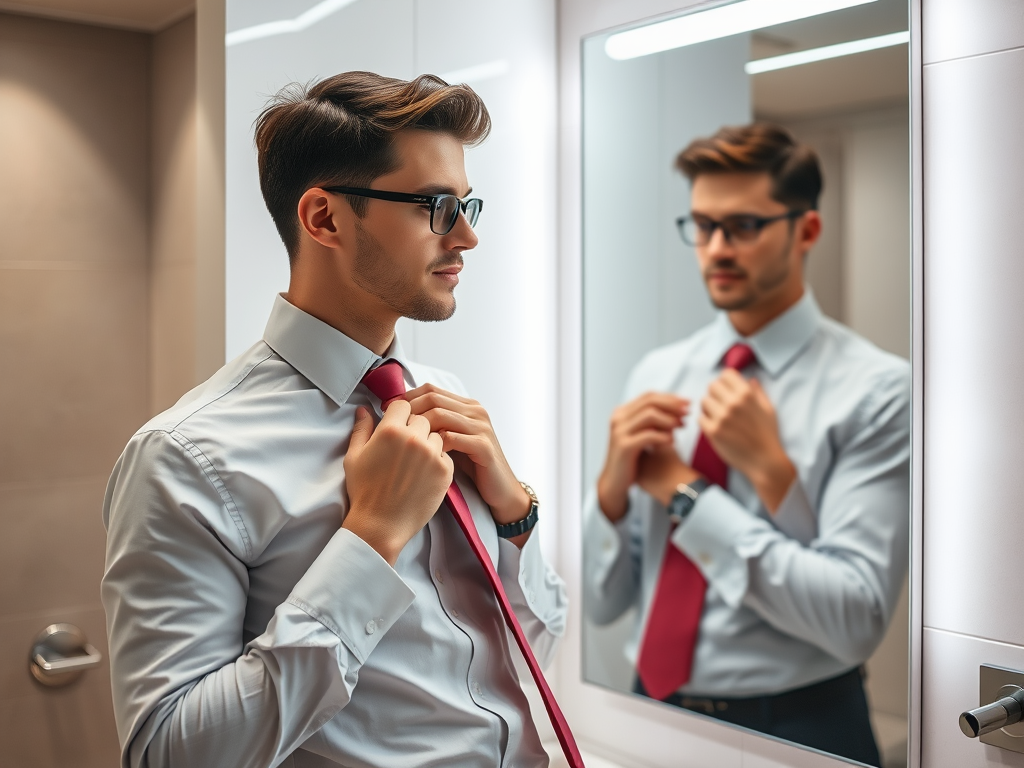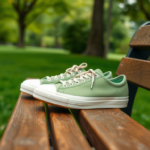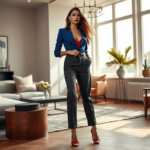Transitioning your wardrobe to a business casual style is more than just cleaning out your closet; it’s about creating a professional persona that allows you to express individuality while adhering to workplace standards. Understanding what business casual truly means can vary from one office to another, but the general principle remains the same: comfort without losing professionalism. The modern work environment has evolved, embracing a style that reflects the diverse personalities of its employees while still maintaining an air of authority and smartness. This article will guide you through the complexities of shifting your wardrobe, providing practical tips, essential pieces, and valuable insights. By the end, you’ll confidently navigate the nuances of dressing smartly for any occasion within your professional life. So, let’s delve into the art of crafting the perfect business casual wardrobe!
Understanding Business Casual

Business casual is often defined differently across industries and workplaces, making it imperative to familiarize yourself with your company’s culture. Generally, it represents a bridge between the traditional business suit and everyday casual wear. This style fosters a relaxed atmosphere while still conveying respect for the work environment and colleagues. Making a good impression during meetings, presentations, and casual interactions relies heavily on the clothing choices you make. It’s the subtle balance of comfort and formality that sets the tone for your professional image. Consequently, grasping the essentials of business casual attire is vital for long-term wardrobe planning.
While formal wear often encompasses tailored suits, dress shirts, and polished shoes, business casual provides more flexibility. Key items in a formal wardrobe may include:
- Suits with ties
- Dress shoes and formal attire
- Tailored skirts and blouses
On the other hand, business casual embraces comfort without sacrificing professionalism. Consider these common alternatives:
- Polo shirts or smart blouses
- Dress pants or chinos
- Stylish flats or loafers
These distinctions are crucial to ensure you’re always dressed appropriately, regardless of the situation. Knowing what fits your workplace standards will set you up for success in your wardrobe transition.
Assessing Your Current Wardrobe

Before you make any purchases or investments, it’s imperative to take stock of what you already own. Go through your closet, and categorize your clothes into three simple groups: keep, donate, and replace. This assessment allows you to maximize existing resources while minimizing waste. Focus on identifying items that align with the business casual aesthetic. Transitioning can feel overwhelming, but this methodical approach will streamline the process. In this way, you can feel confident knowing you are making informed decisions.
| Category | What to Do |
|---|---|
| Keep | Items that can be paired with business casual staples, such as blazers or dress shoes. |
| Donate | Clothes that no longer fit or haven’t been worn in a while. |
| Replace | Invest in versatile pieces that enhance your business casual looks. |
Once you’ve organized your closet, you’ll have a clearer picture of what pieces you might want to invest in moving forward. This leads to a more intentional shopping experience that gathers the most suitable pieces rather than a haphazard accumulation of clothing.
Essential Pieces for a Business Casual Wardrobe
When it comes time to build or refresh your business casual wardrobe, certain core essentials should be prioritized. These items should be versatile, allowing for an array of combinations to suit varying professional contexts. Think foundational and functional—pieces you can rely on day in and day out. Comfortable yet sophisticated attire can help navigate those unexpectedly busy office days without feeling uneasy in your clothing.
Core Essentials
- Dress Shirts and Blouses: Opt for solid colors or subtle patterns that can be easily paired with various bottoms.
- Pants and Skirts: Choose well-fitted dress pants, chinos, or knee-length skirts for a polished look.
- Footwear: Comfortable yet professional shoes, such as loafers or ankle boots, are essential.
Moreover, integrating accessories can often transform a basic outfit into something memorable. Simple yet effective additions can elevate your business style as you tailor your ensemble to unique scenarios found within the workplace.
Accessories to Enhance Your Look
Consider adding:
- Ties, which can add a pop of color.
- Belts to define your silhouette and tie together outfits.
- Professional bags that complement your look while providing functionality.
These finishing touches can add flair and personality to your overall look, ensuring you stand out in a sea of business casual attire.
Tips for Mixing and Matching
Creating multiple outfits from key pieces is essential for maximizing your business casual wardrobe. The art of mixing and matching allows you to derive styles from various perspectives. Not only does this save time in the morning, but it fosters creativity in how you present yourself. Layering and color coordination will become your best friends in this pursuit, granting you more options than you may have initially realized were possible.
- Layering: Use blazers or cardigans to add structure and formality to a more casual outfit.
- Color Coordination: Stick to a color palette that allows for easy mixing. Neutrals work well alongside bolder colors.
Being deliberate in your choices will provide a sophisticated yet relaxed atmosphere in the office, which is increasingly valued in today’s work culture.
Dressing for Different Occasions
Awareness of the various events within the workplace context is vital when navigating your business casual attire. Certain situations require a more polished look, while others may embrace a relaxed atmosphere. Understanding this can prevent any wardrobe mishaps that may derail your confidence. Being prepared will help you be at ease, turning heads for all the right reasons.
For formal meetings, choose tailored pieces that convey professionalism. Opt for dress pants combined with a smart blazer and polished shoes. In contrast, on casual Fridays, you can incorporate more relaxed elements, such as dark jeans or more colorful attire while still looking put-together. The key lies in ensuring that regardless of the occasion, you feel comfortable, confident, and appropriately dressed.
Conclusion
Transitioning your wardrobe to business casual doesn’t have to be overwhelming. By understanding the essentials of business casual attire, assessing your current wardrobe, and knowing how to mix and match, you can create a professional yet comfortable look. With a strategic approach, you can easily navigate the transition and feel confident at the office. Emphasizing comfort and individuality within appropriate parameters is the essence of a successful wardrobe transformation. Equip yourself with knowledge, and ensure that your wardrobe reflects who you are professionally.
Frequently Asked Questions
- What is considered business casual attire? Business casual attire typically includes dress shirts, blouses, dress pants, chinos, skirts, and professional shoes without the formality of a complete suit.
- Can I wear jeans in a business casual setting? Yes, dark, well-fitted jeans can be appropriate for business casual outfits, especially on casual days.
- Should I wear a tie for business casual? Ties are generally not required in a business casual setting but can add a touch of professionalism if you feel it’s appropriate.
- What fabrics are best for business casual clothing? Fabrics such as cotton, wool blends, and tailored knits are great choices, offering comfort while maintaining a polished look.
- Can I wear sneakers for business casual? While traditional sneakers are typically not considered business casual, stylish loafers or smart casual shoes can be appropriate.




